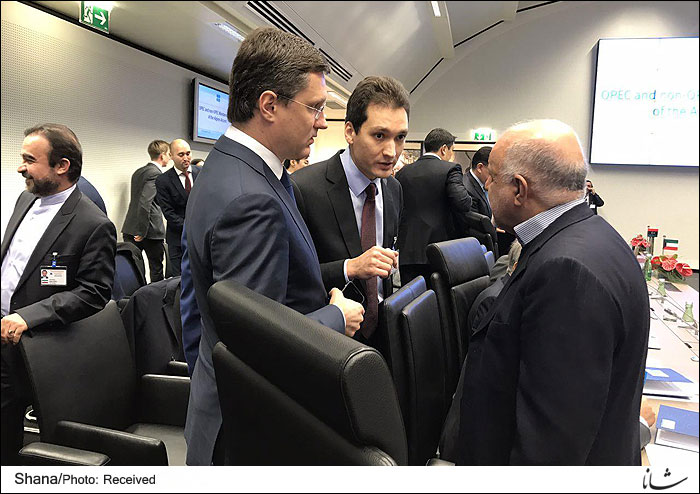The senior officials of the two countries serve as a strong backing for the ties.
Not much time passes since the 171st OPEC session. The phone conversation of Iranian President Hassan Rouhani and his Russian counterpart Vladimir Putin one day before the OPEC November 30 session served as a U-turn in the events. The result of the contract was economy dominating politics with the backing of political relations. Rouhani and Putin stressed that more coordination among all the oil producers globally is necessary and they agreed that in that way they will have necessary coordination.
The result of such cooperation was evident in the OPEC 171st session which agreed on 1.2 million barrels per day cut in oil production in the first six months of 2017. The non-OPEC states, on the other hand, promised to reduce their oil production in the period by 600,000 barrels per day. Today, the OPEC-non-OPEC session is underway in Austrian capital and just one step is left to restoration of stability to the market and price hike.
Iran's Minister of Petroleum Bijan Zangeneh and Russian Minister of Energy Alexander Novak might be considered as leaders of the OPEC-non-OPEC session. After today's meeting, the two ministers are to meet in Tehran on Tuesday to launch serious discussions on expansion of oil cooperation. Expansion of the Tehran-Moscow relations has been on agenda of the leaders of the two countries.
To this end, Iran-Russia energy committee is to convene for the first ever in Tehran on Monday with Deputy Minister of Petroleum for International and Trading Affairs Amir-Hossein Zamaninia and Russian Deputy Minister of Energy.
Iran-Russia energy cooperation is not the only point of focus. Big Russian companies like Lukoil and Gazprom, Rosneft and other major Russian companies are highly interested in cooperation with Iran. Late September this year, Managing Director of Lukoil Vagit Alekperov met Zangeneh and then told reporters, "Besides the Ab Teymour and Mansoori fields, Lukoil has undertaken study on Persian Gulf and we will announce it in the near future."
Per two separate Memoranda of Understanding (MoU) Iran has also entrusted studies on Dehloran oil fields to Russian Tatneft and the joint fields of Aban and Paydar Gharb to Zarubezhneft.
The Tehran-Moscow plan for expansion of relations is highly extensive; perhaps, the visit of Russian President Vladimir Putin to Tehran to take part in the 3rd Summit of the Gas Exporting Countries' Forum (GECF) in December 2015 can be considered as the prelude to start of serious relations between the two sides. During the few hours short trip, Putin met and conferred with Supreme Leader of Islamic Revolution Ayatollah Seyed Ali Khamenei and senior statesment of Iran. December has come again.
Thanks to successful measures of the current administration, volume of economic relations between Iran and Russia has reached about 1.7 billion dollars. The ties received about 30 percent growth in 2015 as well. Based on the new statistics available, in the past nine months, volume of trade rose by more than 70 percent compared to that in the corresponding period in 2015.
Translated by Behnaz Hossein Gholipour


Your Comment